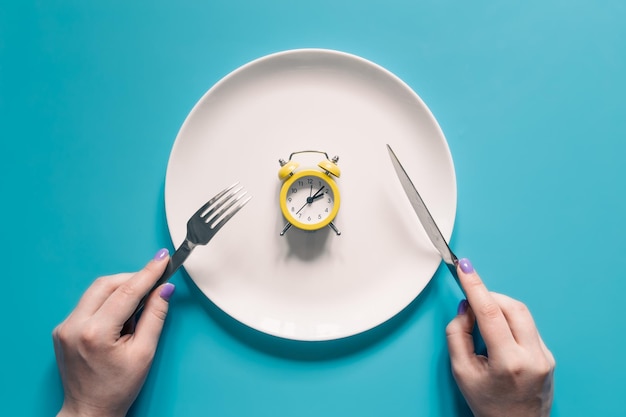21 Science-Backed Ways HIIT Can Balance Your Hormones: A Beginner’s Guide to Fitness & Hormonal Health
If you're new to the gym and struggling with fatigue, mood swings, or unexplained weight gain, your hormones might be out of balance. The good news? High-Intensity Interval Training (HIIT) isn’t just for athletes—it’s a powerful tool for regulating key hormones, even if you're just starting out.
This guide walks you through 21 practical, beginner-friendly ways HIIT can help balance your hormones, complete with weekly targets, safety tips, and actionable advice to get you started confidently.
Why Hormone Balance Matters
Hormones like insulin, cortisol, estrogen, testosterone, and growth hormone control everything from your energy and mood to metabolism and sleep. When they’re out of sync, daily life becomes harder. Lifestyle changes—especially exercise—can significantly influence hormonal health.
HIIT, which alternates short bursts of intense effort with recovery periods, has been shown to improve insulin sensitivity, reduce cortisol overproduction, and boost endorphins and growth hormone—all critical for balance.
21 Ways HIIT Supports Hormonal Balance
- Improves Insulin Sensitivity: Just 2–3 HIIT sessions per week can help your body use insulin more efficiently, reducing the risk of insulin resistance.
- Reduces Cortisol (When Done Right): Moderate HIIT lowers stress hormones, but overtraining raises cortisol. Stick to recommended durations.
- Boosts Human Growth Hormone (HGH): Short, intense efforts stimulate natural HGH release, supporting muscle repair and fat metabolism.
- Enhances Endorphin Release: HIIT triggers feel-good chemicals that reduce anxiety and improve mood.
- Supports Testosterone Levels: In both men and women, balanced testosterone is vital for energy and muscle tone. HIIT can help maintain healthy levels.
- Regulates Leptin and Ghrelin: These hunger hormones control appetite. HIIT helps normalize their signals, reducing cravings.
- Promotes Better Sleep: Improved circadian rhythm from regular exercise supports melatonin production.
- Reduces Inflammation: Chronic inflammation disrupts hormones. HIIT lowers inflammatory markers over time.
- Increases Mitochondrial Function: Better cellular energy production supports hormonal signaling.
- Supports Thyroid Health: While not a treatment, regular activity improves metabolic rate and T3/T4 efficiency.
- Enhances Brain-Derived Neurotrophic Factor (BDNF): HIIT boosts BDNF, which supports brain health and mood stability.
- Helps Manage PCOS Symptoms: Women with PCOS often benefit from improved insulin control through HIIT.
- Encourages Consistent Routine: Regular workouts stabilize circadian rhythms, which regulate cortisol and melatonin.
- Builds Confidence and Reduces Stress: Physical achievement lowers psychological stress, a major hormonal disruptor.
- Improves Body Composition: Lower body fat percentage helps balance estrogen and leptin.
- Supports Adrenal Health: When not overdone, HIIT helps adrenals adapt to stress more efficiently.
- Enhances Oxygen Utilization: Better VO2 max from HIIT improves overall metabolic health.
- Promotes Lymphatic Circulation: Movement helps clear toxins that can interfere with hormone function.
- Encourages Mind-Body Connection: Focusing on movement and breath during intervals reduces mental clutter and stress.
- Facilitates Routine Blood Flow: Improved circulation ensures hormones are transported efficiently.
- Teaches Recovery Discipline: Learning when to rest is as important as when to push—key for hormonal recovery.
- Builds Long-Term Resilience: Over time, your body becomes better at adapting to physical and emotional stressors.
Beginner-Friendly Weekly HIIT Targets
Start slow to avoid burnout and hormonal disruption. Here’s a safe weekly plan:
- Week 1–2: 2 sessions/week, 10–15 minutes each. Example: 30 seconds of fast marching or jumping jacks, 60 seconds rest. Repeat 5–6 times.
- Week 3–4: 2–3 sessions/week, 15–20 minutes. Increase intensity slightly: 40 seconds on, 50 seconds off.
- Week 5+: 3 sessions/week, 20–25 minutes. Add bodyweight moves like squats or modified push-ups during work intervals.
Always include a 3–5 minute warm-up and cool-down. Listen to your body—fatigue, insomnia, or irritability may signal overtraining.
Safety Reminders for Gym Newbies
- Consult Your Healthcare Provider: Especially if you have thyroid issues, adrenal fatigue, or hormonal conditions.
- Avoid Overtraining: More isn’t always better. Limit HIIT to 3 sessions per week max for beginners.
- Hydrate and Fuel Properly: Dehydration and low energy intake disrupt cortisol and insulin.
- Focus on Form: Poor technique increases injury risk and stress response.
- Rest and Recover: Sleep 7–9 hours nightly. Muscles and hormones recover during rest.
- Track How You Feel: Energy, mood, and sleep are better indicators than weight alone.
Final Thoughts
HIIT is more than a fat-burning tool—it’s a hormonal reset button when used wisely. As a gym newbie, your focus should be on consistency, safety, and gradual progress. By following these 21 tips and respecting your body’s limits, you’ll support long-term hormonal balance and overall well-being.
Start small, stay consistent, and celebrate every step forward.















